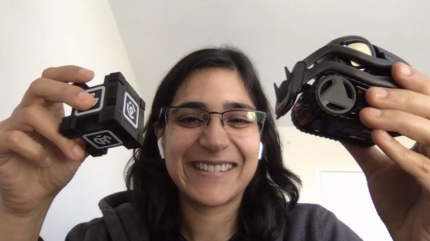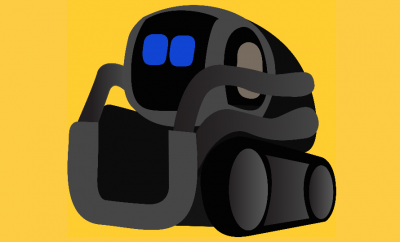Fighting Social Isolation with Robots

Social distancing can be particularly tough for elementary-age children; talking with friends on Zoom isn’t the same as playing hide-and-seek or just running around with their peers. A team of roboticists has come up with a way to fix that.
 Students in the labs of computer science professors Brian Scassellati and Marynel Vazquez have developed an app, VectorConnect, that allows kids to use robots to interact with their friends in separate homes. The app, which is free and available through the Apple AppStore and Google Play, works with the commercially available robot known as Vector. For it to work, both children need to have the app, but only one of the homes has to have the robot. Through the app, the user can control the robot in the other person’s home, users can hear each other, and see through the robot’s “eyes” - that is, everything the robot picks up on the camera is visible on the mobile device screen.
Students in the labs of computer science professors Brian Scassellati and Marynel Vazquez have developed an app, VectorConnect, that allows kids to use robots to interact with their friends in separate homes. The app, which is free and available through the Apple AppStore and Google Play, works with the commercially available robot known as Vector. For it to work, both children need to have the app, but only one of the homes has to have the robot. Through the app, the user can control the robot in the other person’s home, users can hear each other, and see through the robot’s “eyes” - that is, everything the robot picks up on the camera is visible on the mobile device screen.
“Most importantly, you can actually maneuver around in that space and do things - that's what makes it different from just sitting there on a Zoom call,” said Scassellati, the A. Bartlett Giamatti Professor of Computer Science & Mechanical Engineering & Materials Science.

With help from a generous donation from Evren Bilimer ’00, a limited number of robots will be distributed to families in the New Haven area free of charge.
The idea for the project, which they call “Robots for Good,” came about soon after Yale moved operations online to prevent the spread of COVID-19. Scassellati’s class, Intelligent Robotics Laboratory, a mix of undergraduate and graduate students, found themselves unable to complete most of the projects they had been working on. Brainstorming on what they could do while working remotely, one team decided to tackle social isolation.
“They really wanted to do something that was timely and something that was going to help,” he said. They focused on the 5- to 12-year-old age group because it’s easier for older kids and adults to stay in touch with each other over email, Zoom or other kinds of remote communication.
“But elementary school-age kids largely don’t connect electronically,” he said. “They connect through physical play and being there with each other. We identified this as something we could do, and it took off from there.”
With time being an issue - they wanted to get the app out as soon as possible - Scassellati spread the word about the project, and Vazquez’s students volunteered to help.
With children going to school remotely, they’re already spending a lot of time in front of a computer. Vazquez noted that the app and robot gives them a break from that while still allowing them to communicate with their friends.
“The cool thing about the robot is that, because it’s physical, you can imagine the remote person interacting physically with the world of the other person in their home,” said Vazquez, assistant professor of computer science. “And that for kids is super fun - it helps them develop their spatial abilities, and they do a lot of this when they’re young, so it’s more natural than sitting in front of a monitor all the time.”
Vazquez stressed that the project was driven mainly by the students. Working remotely, the team of about 12 members took in a lot of Zoom meetings to put the app together in a few weeks.
“I'm impressed with how things have evolved and that we were able to have something that's tangible, because everybody's crazy right now with COVID, and with restrictions in time - the students have been very dedicated,” she said.
In the short amount of time that they had to develop the system, they were able to test it out with a few families. Scassellati said the children found a number of ways to play with the Robots for Good system.
“They built an obstacle course to see what they could do,” he said. “They played hide and seek, and they chased each other - all the kinds of things kids this age would do if they were there.”
Go here to the Robots for Good website for more information about the project and how families can apply for a robot.

